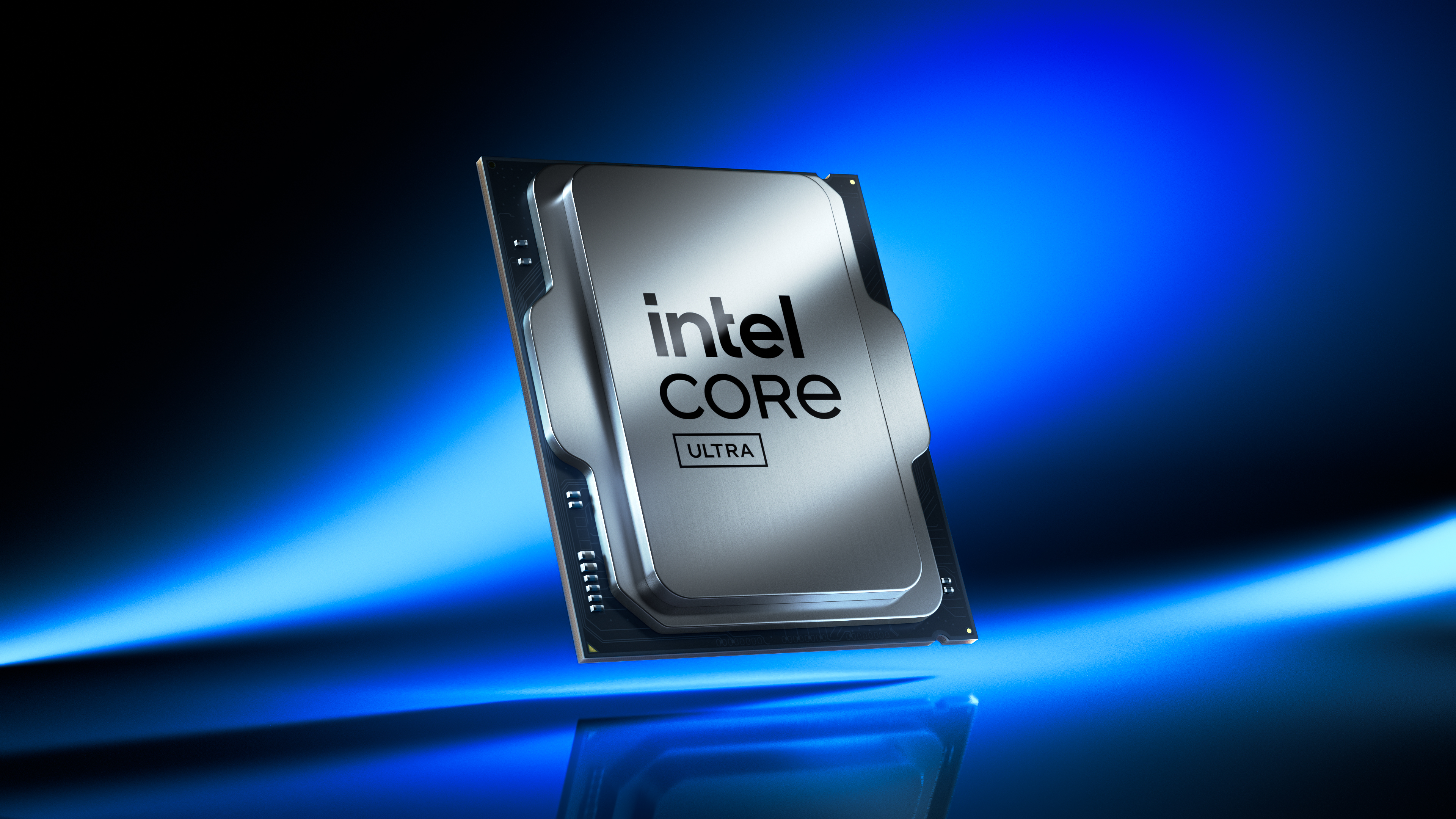Intel's next-gen Nova Lake CPUs will seemingly use a new LGA1954 socket
LGA1954 in, LGA1851 out.

Shipping documents sourced from NBD.ltd purport that Intel might switch to the LGA1954 platform for its next-generation Nova Lake processors on desktop (via Olrak). This is accompanied by PCH tooling likely intended for the 900-series chipsets. Importantly, these listings do not indicate an imminent launch, especially since Nova Lake has officially been confirmed as a 2026 product.
Nova Lake is officially a part of Intel's product family, set to supersede Arrow Lake next year. Preliminary silicon configurations allege two clusters of eight Coyote Cove P-cores and 16 Arctic Wolf E-cores, complemented by four Low-Power Efficient (LPE) cores in the SoC Tile, adding up to 52 hybrid cores. Intel's engineers explore numerous design strategies, so whether this ambitious 52-core project will ever see the light of day is unclear.
The information within the manifests implies that Intel is actively distributing LGA1954 testing hardware to its global facilities. Specifically, these are not full-fledged motherboards but appear to be some form of a specialized interposer to test voltage regulation for the upcoming platform. Either way, these kits are designated for "NVL-S", the shorthand for Nova Lake Desktop.


There are also mentions of reball jigs or reballing stations for an 888-ball BGA chip, measuring 600 mm2 (25mm x 24mm), and these seem to be for Nova Lake's PCH. Existing 800-series chipsets (Z890, B860, and H810) use a package that's around 650 mm2. So, Nova Lake's south bridge might be a tad smaller than Arrow Lake's, but this isn't particularly informative.
The limited lifespan of LGA1851 is a letdown, though the rumored Arrow Lake Refresh might offer some solace to enthusiasts who've invested a lot in this platform. Intel platforms typically last for two generations, and while LGA1700 was an exception, the 13th and 14th generations were mere refreshes, using the same process nodes, and (almost) similar architectures, stemming from Alder Lake.
LGA1954 will feature 1,954 electrically active landing pads. The total count, including debugging pins, could exceed 2,000, as many sockets feature more pads than their name indicates; a fact that was meticulously confirmed by a manual count of all the pads on an LGA1851 motherboard at an event in Japan. If this leak holds, Nova Lake and possibly even Razer Lake should be compatible with the LGA1954 platform, but the provided details are stretched too thin for us to draw any conclusive statements.
Follow Tom's Hardware on Google News to get our up-to-date news, analysis, and reviews in your feeds. Make sure to click the Follow button.
Stay On the Cutting Edge: Get the Tom's Hardware Newsletter
Get Tom's Hardware's best news and in-depth reviews, straight to your inbox.

Hassam Nasir is a die-hard hardware enthusiast with years of experience as a tech editor and writer, focusing on detailed CPU comparisons and general hardware news. When he’s not working, you’ll find him bending tubes for his ever-evolving custom water-loop gaming rig or benchmarking the latest CPUs and GPUs just for fun.
-
ezst036 Intel needs to learn the weakness of its market position and stop doing this to its customers.Reply
Sockets that don't last long is a major fail. I get that Intel has done this for a long time and it also takes time to change culture. That's fair. I hope this new 1954 will have twice or longer the lifetime of its predecessor.
Its fair to say that that no socket lasts forever. However Intel's socket strategy causes abandonment issues. -
acadia11 1000% agree. It's not even about weakness of position and rather scale of operation , the longer and more mature a platform, the more adoption. The more chance they'll stick with you if I've got redo my mobo just to get to the next generation of chip family it opens opportunity for me to adopt another platform as I'm already making changes. Hey I got a perfectly good wife at home but if I have to get her plastic surgery every time we want to go out for dinner , I might as well go look about and see what the streets are saying I'm already doing so much just to go out to dinner.Reply -
Roland Of Gilead Eh, my math is a out a bit.Reply
16 P cores + 16 e cores, plus 4 LP cores.
Didn't Intel drop HT? Or are they bringing it back? Otherwise the 52 core count doesn't match up. -
Fe4rlessCloak Reply
(8P + 16E) * 2 + 4 LPE = 52 CoresRoland Of Gilead said:Eh, my math is a out a bit.
16 P cores + 16 e cores, plus 4 LP cores.
Didn't Intel drop HT? Or are they bringing it back? Otherwise the 52 core count doesn't match up. -
Roland Of Gilead Reply
Aha! Thank you :) I prob shouldn't have had a beer whilst reading this!! :ROFLMAO:Fe4rlessCloak said:(8P + 16E) * 2 + 4 LPE = 52 Cores -
closs.sebastien Reply
hum, when we change the cpu, it is mainly to change the platform, like going from pcie3/4 to 5, from ddr3/4 to 5, to get new usb (c), etc..ezst036 said:Intel needs to learn the weakness of its market position and stop doing this to its customers.
Sockets that don't last long is a major fail. I get that Intel has done this for a long time and it also takes time to change culture. That's fair. I hope this new 1954 will have twice or longer the lifetime of its predecessor.
Its fair to say that that no socket lasts forever. However Intel's socket strategy causes abandonment issues.
so no matter the socket, the motherboard is changed any way.
do you know people who only change the cpu when they do a big upgrade? or change the cpu every year? I don't. -
bit_user Reply
Yeah, it sounds like they're going to take a page out of the Ryzen 3000 playbook and allow doubling up on compute chiplets?Fe4rlessCloak said:(8P + 16E) * 2 + 4 LPE = 52 Cores
Heh, I wonder if they'll make a version with no compute chiplets that just has the 4 LPE cores!
: D -
bit_user Reply
Funny thing about that...closs.sebastien said:hum, when we change the cpu, it is mainly to change the platform, like going from pcie3/4 to 5, from ddr3/4 to 5, to get new usb (c), etc..
so no matter the socket, the motherboard is changed any way.
Intel didn't change sockets between Sandybridge vs. Ivy Bridge, yet Ivy Bridge increased PCIe support to 3.0.
Same thing for Ryzen 3000 adding PCIe 4.0 on AM4.
Same thing for Rocket Lake on LGA1200 (although, Comet Lake was originally meant to have it, before Intel pulled it back).
Oh, and about RAM? Skylake supported both DDR3L and DDR4. Alder Lake & Raptor Lake support both DDR4 and DDR5.
So, this shows a socket change isn't necessary, although the availability of some features will be board/chipset-specific.
I bought an Alder Lake i5. I was planning on upgrading to an i7 or i9 Raptor Lake, but then all of the instability issues came to light and I decided to sit tight. Once the fixes for that stuff came out, rumors of Bartlett Lake started whetting my appetite and I decided I'd wait for it, instead.closs.sebastien said:do you know people who only change the cpu when they do a big upgrade? or change the cpu every year? I don't.
I've heard of plenty of people doing a CPU-only upgrade on AM4. Motherboard might get upgraded later, or not.
My hope for AMD is that Zen 6 upgrades the chipset link to PCIe 5.0, when using a new mobo. That link is probably the most useful place on the entire board where they could've put PCIe 5.0, yet it's the one place they didn't! -
hotaru251 intel needing a new socket already?Reply
such a shocker
ok so sarcasm aside who is buying intel desktop? (unless you "need" thunderbolt)